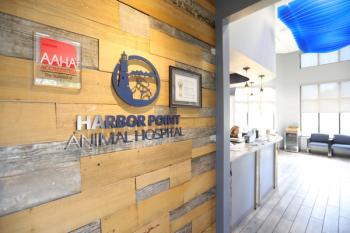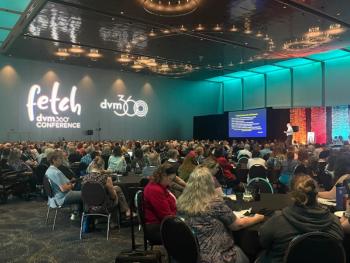
Communicable health: Spread the word
Trying to bridge public health with the medical and veterinary communities is no small undertaking.
PITTSBURGH — Trying to bridge public health with the medical and veterinary communities is no small undertaking, according to noted public-health expert Michael Parkinson, MD, Dipl. ACPM.
On guard: Veterinarians are well versed in population medicine, says Michael Parkinson, MD. And the medical community should take notice. (PHOTO: JIM JUDKIS)
As one of the key players in garnering support for the One Health Initiative in the American Medical Association (AMA), Parkinson was asked about the initiative and what's needed at the local level.
"This is not just about keeping bird flu out of this country. Veterinarians play a critical role in making this entire concept work," he tells DVM Newsmagazine.
"My impression is that veterinarians think environment; they think ecology, and they think population more than probably most physicians do. The science of epidemiology and herd health seems to come easily to veterinarians, and I think because it has been such an important component to veterinary medical education."
But better communication is needed between the health professions, he contends. To fix it, he favors improvements to the public-health infrastructure to make it easier for veterinarians, physicians and public-health officers to work collaboratively with a shared goal of improving the health of their communities.
"The good thing is we can start at the local and community level at the same time we talk about global interaction. Let's build bridges. Let's take existing infrastructure and see if we can't make it more functional."
Defining best-practice models for both companion-animal and food-animal veterinarians remains a critical next step. These models are needed for the medical community, too.
"What is the model so that we have communication? How about clinically meaningful reporting? We need a functioning public-health presence at the local level. How do you make it meaningful for me as a practitioner to participate? How in the end does that collaboration reduce the burden of preventable illness? Those are the questions we need to ask and address."
One way to help spur communication, Parkinson says, might be to include some of these One Health best practices within hospital certification programs. "That is where you start to lay in some of these interfaces between the practicing veterinary and medical communities," he adds.
"We are doing this because there is a human-health cost. There is an environmental and animal ecology issue that we are talking about trying to improve. We have to be able to do that through working relationships."
Newsletter
From exam room tips to practice management insights, get trusted veterinary news delivered straight to your inbox—subscribe to dvm360.




